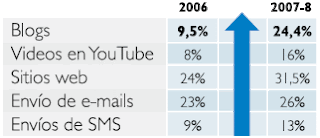
As long as we get close to the next decade it is time to evaluate this one. This decade has been a mixed one. Extraordinary events on the economics ,social, politics, technological and environment side , has made it a unique period of innovation, progress but also the natural stress arising because of passing from one stage to another . Let take a closer look to some of these variables:
a.-Economics: Although it seems that the financial crisis of September 2008 screwed up everything, the average global GDP growth for this decade , will be above expectations (4,5%).On the other side, the emerging economies with average GDP growth of 6,6 %, are leading the path of global expansion. At a pace of 143 people per minute adding up to the world population, keeping Global GDP growth is an imperative. Thus, the main challenge for the next decade will be to focus globally on growth .-
b.- Environment: The Copenhagen conference will barely meet the expectations .In fact, it might be possible to have a failure on reaching an accord deeply rooted on protecting the environment. The implication of this failure will not be trivial ,because it will mean that there is no a serious global framework to cope with the effect of dioxide emission and climate change.
c.- Technology . Who thought at the beginning of this decade that we will witness the marvellous of either I Pod or , Blackberry , as a new line of development on global communication?. Who thought about the chance of a competitor for Yahoo?. Goggle arose as a light star, to become a global giant adding its new resources up to revolutionary transformation on global communication to make the world just one global village , just as the global TV started to do in the eighties .What about Facebook or twitter ?. The human creativity does not stop, and the years 2000 will be remembered because of a genuine expression of that.-
d.- Stress. Although the signals of progress are clear enough to count on them as a fact. For different reasons ,fear has become a daily feeling for many people around the world .It looks like the further we move ahead on the technological front ,the more we move backward when it comes to enjoy what we have accomplished .Thus, it seems obvious that the next stage on global development, will be more complex than expected.
However, the world is already flat, which means that everything goes on faster than before, it spreads quicker than before, but it should last less than before, as long as a new event arise because of human creativity. The learning abilities should apply as a guarantee for such a characteristics, innovation and knowledge should make the difference in the next decade ,the one which is close to begin.-




















